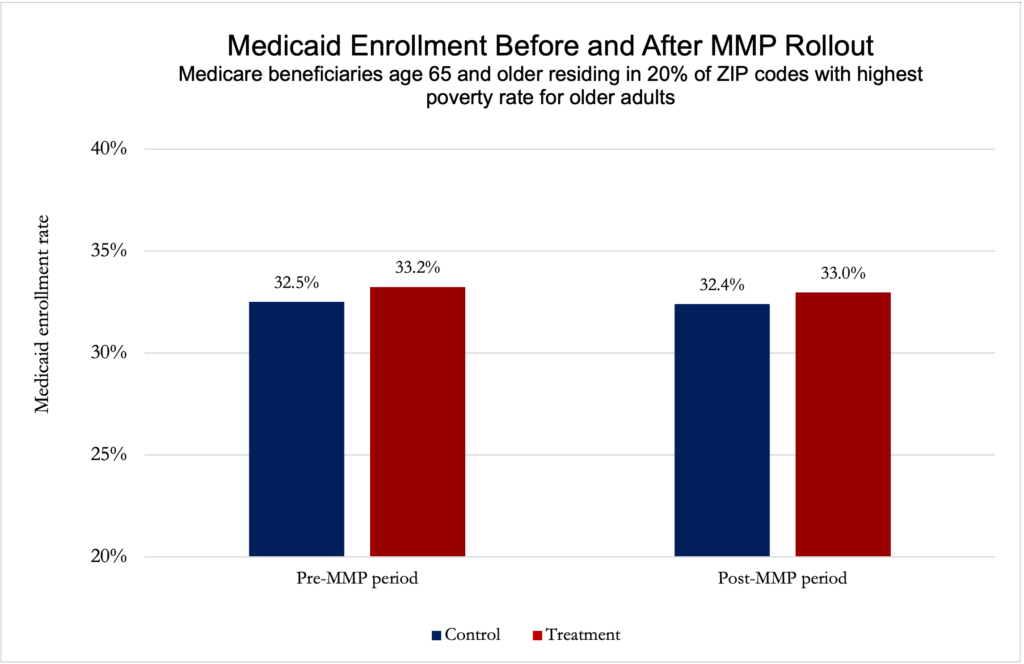Less Postacute Care for Medicare Advantage Beneficiaries Does Not Mean Worse Health
Research Brief: Shorter Stays in Skilled Nursing Facilities and Less Home Health Didn’t Lead to Worse Outcomes, Pointing to Opportunities for Traditional Medicare
Blog Post

People eligible for both Medicare and Medicaid are often dropped from Medicaid due to income changes or administrative hurdles. One potential solution, Medicare-Medicaid Plans (MMPs), was expected to increase enrollment because integrated care improves health outcomes and reduces inefficiencies for this vulnerable group.
But the first study to evaluate the effect of integrated plans on Medicaid enrollment failed to show any effect. LDI Senior Fellow Eric T. Roberts and colleagues found that the implementation of MMPs was not associated with a significant increase in Medicaid enrollment among Medicare beneficiaries living in communities with high poverty rates, where Medicaid-eligible individuals disproportionately live.
These findings suggest that the expansion of integrated care plans alone may not meaningfully increase Medicaid enrollment rates. Instead, policies that help Medicare beneficiaries retain Medicaid enrollment might better enhance Medicare-Medicaid integration efforts.
The study, “Effects of Dual-Eligible Integrated Care Plans on Medicaid Enrollment and Retention: Evidence From the Implementation of Medicare-Medicaid Plans,” was published October 2, 2025 in Medical Care Research and Review by Eric T. Roberts, Eliza Macneal, Kenton J. Johnston, José F. Figueroa.

Research Brief: Shorter Stays in Skilled Nursing Facilities and Less Home Health Didn’t Lead to Worse Outcomes, Pointing to Opportunities for Traditional Medicare

How Threatened Reproductive Rights Pushed More Pennsylvanians Toward Sterilization

Abortion Restrictions Can Backfire, Pushing Families to End Pregnancies

They Reduce Coverage, Not Costs, History Shows. Smarter Incentives Would Encourage the Private Sector
Research Brief: Less Than 1% of Clinical Practices Provide 80% of Outpatient Services for Dually Eligible Individuals

New Findings Highlight the Value of 12-Month Eligibility in Reducing Care Gaps and Paperwork Burdens